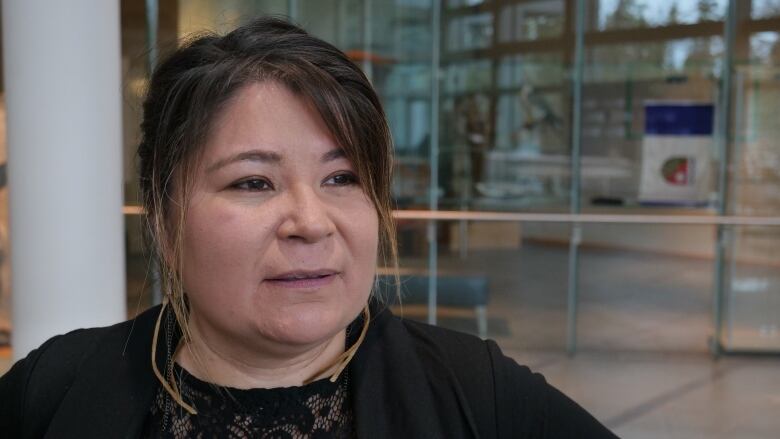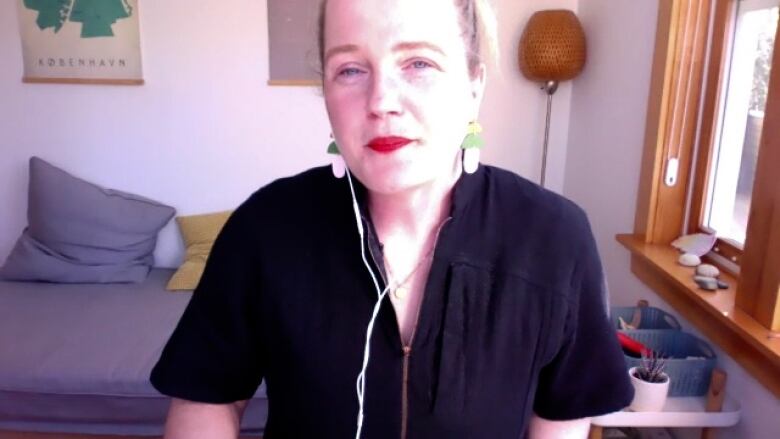The cost to fix N.W.T.'s housing crisis has just doubled. Experts tell us what should come next
One expert says there's an appetite from Indigenous leaders to take on more responsibility for housing

This is part fiveof a series on the housing crisis in the Northwest Territories.
The amount of money needed to address the Northwest Territories' housing deficit has almost doubled during the COVID-19 pandemic, CBC North has learned.
The N.W.T. Housing Corporation said in a statement they need between $500-600 million to improve the housing conditions of close to 3,000 households in the territory, up from $300 million in 2017.
The money would be used to address what the corporation calls "core need" in their public housing units, which could mean overcrowding, poor conditions or unaffordable housing.
The big jump in costs, the corporation explained, is because construction costs have increased "significantly" in the last year due to the pandemic.
These forecasted numbers, the department continued, don't include costs for "ongoing operations and maintenance, future repairs or capital replacements."
The N.W.T. Housing Corporation didn't provide any other information on how they got to this estimate.
Paulie Chinna, the territory's housing minister, told CBC they're doing what they can to explain the extent of the crisis to their counterparts in Ottawa.
"It would be a lot of time and programming to be honest, but we don't have $500 [million] as a territory to begin with," she said.
"We're up against other territories and provinces too, so we need to make our statement very strong."
CBC asked experts who study and work in the N.W.T.'s housing system for recommendations on how to move forward from here. Theconsensus is COVID-19, coupled with these rising construction costs, means it's time for the territory to get creative if it wants to emerge from the housing crisis for good.
Indigenous governments wantmore housing responsibility
Julia Christensen, professor at Memorial University and project lead of At Home in the North, said there's been a lot of appetite from Indigenous leaders to take on more responsibility for housing on their lands. At Home in the North is a pan-northern research project that looksto develop culturally safe housing models with and for northern communities.
"There's a lot of evidence that communities themselves are the best situated to make their own housing decisions," Christensen said. "There's a real thirst to be able to do that."

To do that, Christensen said the N.W.T. Housing Corporation would have to let go a "substantial amount" of control on some of their policies, like how contractors are hired.
Sandra Turner, a former specialist in northern housing with the Canadian Mortgage and Housing Corporation (CMHC), said she would like to see Indigenous governments take charge of their housing supply, so long as the territory offers them enough money to hire staff and buy necessary construction supplies.
There are already places where Indigenous governments are taking the lead, Christensen said, like the K'asho Got'ine Housing Society in Fort Good Hope, N.W.T. Their model works well, she says,because it's built around a common community goal.
The society is also training residents on how to work at the town's sawmill, so locals will be able to build and repair housing without having to outsource work. There's a need to teach tenants or contractors in other communities how to do their own home repairs as well, Christensen says, so they don't have to wait for the N.W.T. Housing Corporation to step in.
CBC will expand on Fort Good Hope's example, as well as other innovative community-based housing solutions, in the last piece of this series.
Meanwhile, the N.W.T. Housing Corporation is already working on community housing plans with Indigenous governments across the territory, according to both Christensen and Turner.These plans map out what assets the community has, and points out the gaps, so both levels of government can come up with the best plan to tackle it.

"If you were to hire a consultant, the first thing they would do is a needs assessment," Turner said.
That's already articulated in this community plan from there, they just need to find out who the partners are, what resources are available, and what they can contribute."
Invest in new housing models to keep costs down
The territory relies on public housing outside of Yellowknife and regional hubs, which is deeply subsidized by the government, Turner said.
Chinna, the territory's housing minister, says she wants to invest in more of these units to reduce the number of overcrowded households in the territory.
"We need to get people housed," she said. "We need to get rid of that overcrowding situation."
The N.W.T. Housing Corporation can only maintain so many public housing units, according to Rob Warburton, co-founder of Cloudworks, a real estate investment company in Yellowknife. So when the territory says they will be building more units, it doesn't mean more is being added to the territory's supply.
What happens instead is the Corporation moves older units off their inventory to be put towardhome ownership. The quality is improving, he continued, but not how many are available.
"Our [public housing] supply hasn't changed in 10 years," Warburton told CBC. "We're not making any progress, we're not housing more people."

Investing in newer public housing units is also unsustainable in the long run, according to Turner. The amount of rent tenants payis driven by your income, so if few people have income in the communities, Turner says,it becomes a huge cost for the government.
The best way to limit overcrowding, Turner continued, is for Indigenous governments to put in place some housing units with a fixed-rent system that wouldn't change with a tenant's employment status.
This would benefit some who have a steady source of income in the communities, and would free up public housing units for those who need it most, Turner continued.
"[The rent] doesn't change, you can budget that, you can cashflow it," she said.
For example, if the territory decides to build two new public housing units in a community, Turner says leadership could ask for a four-plex instead, where two more units would be offered with that fixed rent price, or be put on the market.
Another option the territory could consider is buying more pre-fabricated modular homes from the South, Warburton says, to save money in construction costs.
"If the goal is an energy efficient, modern house, you can bring that up and solve that problem," Warburton said, noting there are many modular homes set up in Yellowknife.
A 1,300 foot modular home sells for up to$500,000 in Yellowknife, Warburton says. While this price would be higher in the smaller communities, he says public housing tenders for over $1 million are common.
There is pressure to not use this method, Warburton acknowledged, because the territory wants to promote local employment. Still, he argues it's the most cost-effective solution.
Consistent, flexible funding needed from Ottawa
The only way to get any housing project off the ground, whether it's from the N.W.T. Housing Corporation or individual Indigenous governments, is to get more consistent, flexible funding from Ottawa, Christensen says.
When the territory gets dedicated housing money, Christensen saysit's often promised on a year-to-year basis, so it's meant to be spent quickly.
What continues to hold [Indigenous governments & NGOs] back is the uncertainty every year as to whether they will be able to continue programming.- Julia Christensen, project lead for At Home in the North
That means fast short-term projects are favoured over more sustainable, long-term projects that would put N.W.T.-based businesses to work. For Indigenous governments and non-profits, Christensen says, it also means more time spent applying for grants than actually doing the necessary work on the ground.
"There's so much to be excited about in terms of innovative housing approaches in the territory, but what continues to hold [them] back is the inability, the uncertainty every year as to whether they will be able to continue programming," Christensen said.
The territory received that kind of fund in last week's federal budget, with $25 million earmarked in this year's fiscal for 30 public housing units across the territory. The government also topped up a $60 million co-investment fund.
The budget has other funds for housing projects that N.W.T. governments and non-government organizations could apply to, like the second round of the $1.5 billion Rapid Housing Initiative. Thefederal government hasn't committed to set aside funds specifically for N.W.T.-based projects in that next round.
Turner says she believes CMHC, which is run by the federal government, already does this.

The problem from her perspective is a lack of understanding as to what might be available to leadership.
"As long as the community can get behind the idea and can show they have what they need to move it forward," Turner said. "Then the money will be there."
'Time is of the essence'
During the pandemic, the N.W.T. found new ways to house the most vulnerable, like a managed alcohol program in Yellowknife for the homeless.
Christensen saysthat type of innovative thinking when it comes to housing solutions should continue in a COVID-free world.
Governments can be flexible to find funding to be able to address an urgent crisis like COVID-19 was.- Julia Christensen, project lead for At Home in the North
"When pressed, governments can be flexible to find funding to be able to address an urgent crisis like COVID was," Christensen said.
The territory needs to evaluate what worked and what didn't with their pandemic housing response sooner rather than later, Christensen added. That way, the territory will know what kind of restructuring needs to happen to make sure quick, innovative housing solutions can keep coming.
"Time is of the essence," she said. "This is fresh in everyone's minds right now, so it's really something that has to happen urgently, not put off till we're well past the pandemic."
In March, MLAs passed a motion to study the N.W.T. Housing Corporation's policies. It's not known whether some of the territory's pandemic-related housing measures will also be studied.












_(720p).jpg)


 OFFICIAL HD MUSIC VIDEO.jpg)
.jpg)



























































































